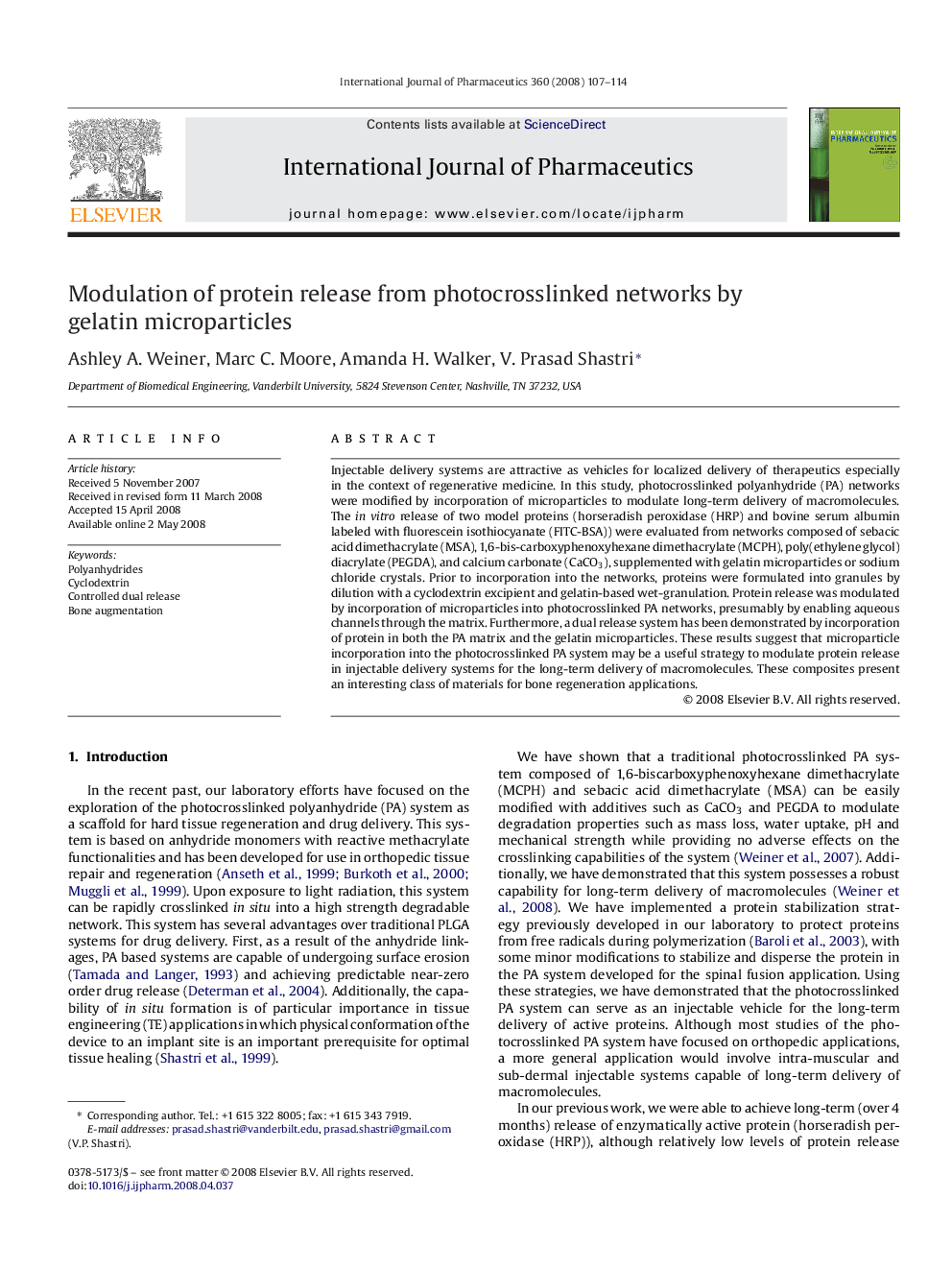| Article ID | Journal | Published Year | Pages | File Type |
|---|---|---|---|---|
| 2505100 | International Journal of Pharmaceutics | 2008 | 8 Pages |
Injectable delivery systems are attractive as vehicles for localized delivery of therapeutics especially in the context of regenerative medicine. In this study, photocrosslinked polyanhydride (PA) networks were modified by incorporation of microparticles to modulate long-term delivery of macromolecules. The in vitro release of two model proteins (horseradish peroxidase (HRP) and bovine serum albumin labeled with fluorescein isothiocyanate (FITC-BSA)) were evaluated from networks composed of sebacic acid dimethacrylate (MSA), 1,6-bis-carboxyphenoxyhexane dimethacrylate (MCPH), poly(ethylene glycol) diacrylate (PEGDA), and calcium carbonate (CaCO3), supplemented with gelatin microparticles or sodium chloride crystals. Prior to incorporation into the networks, proteins were formulated into granules by dilution with a cyclodextrin excipient and gelatin-based wet-granulation. Protein release was modulated by incorporation of microparticles into photocrosslinked PA networks, presumably by enabling aqueous channels through the matrix. Furthermore, a dual release system has been demonstrated by incorporation of protein in both the PA matrix and the gelatin microparticles. These results suggest that microparticle incorporation into the photocrosslinked PA system may be a useful strategy to modulate protein release in injectable delivery systems for the long-term delivery of macromolecules. These composites present an interesting class of materials for bone regeneration applications.
